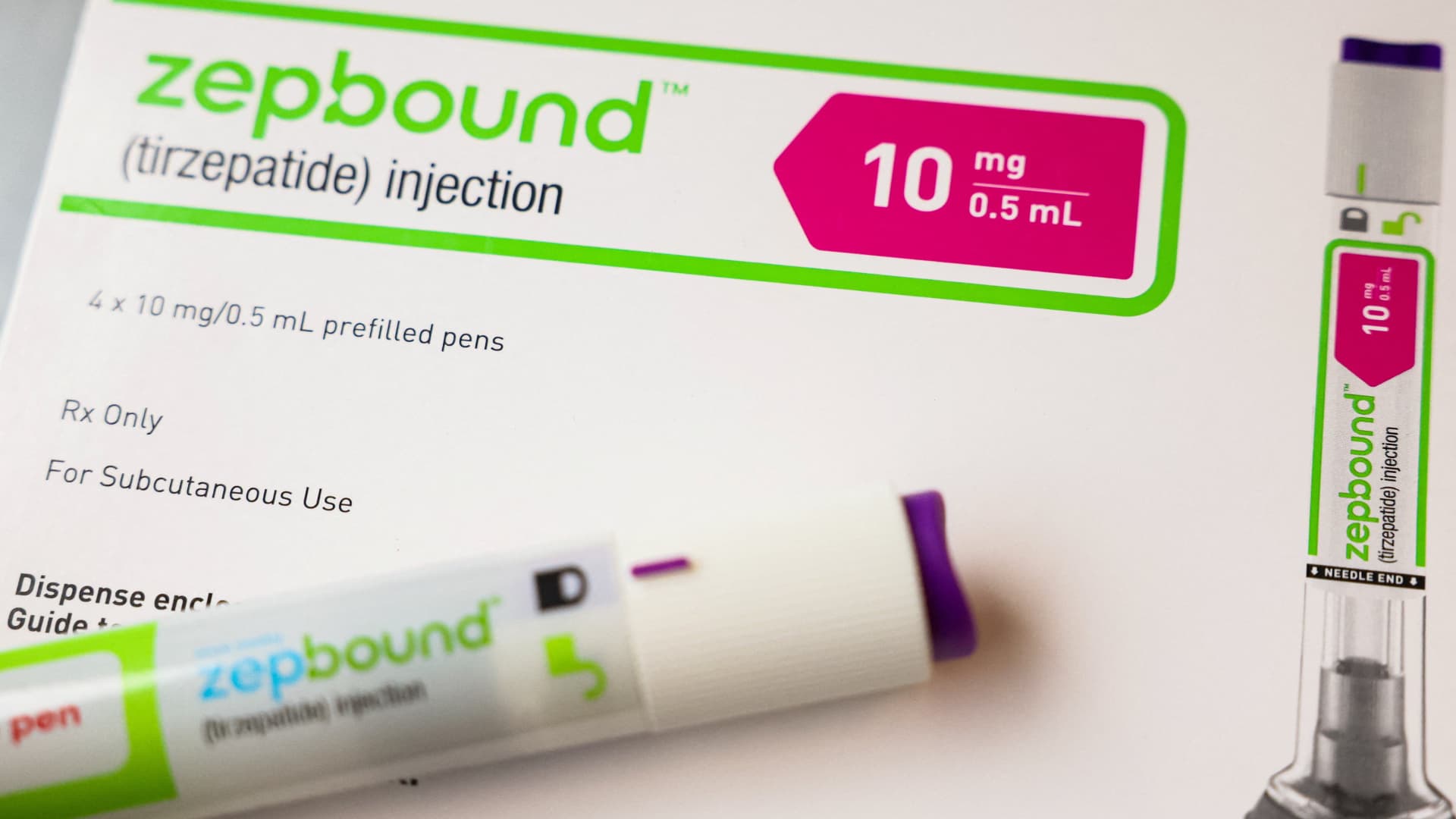Products You May Like
Eli Lilly on Friday said it applied for U.S. approval of its weight loss drug Zepbound for the treatment of the most common sleep-related breathing disorder and expects regulators to make a decision as early as the end of the year.
If cleared by the Food and Drug Administration, the company plans to launch Zepbound for so-called obstructive sleep apnea “as quickly as we can” at the beginning of 2025, Patrik Jonsson, president of Eli Lilly diabetes and obesity, said in an interview.
Also on Friday, the company released additional data from two late-stage trials showing that Zepbound helped resolve obstructive sleep apnea, or OSA, in almost half of patients. Eli Lilly presented the new data from the trials at the American Diabetes Association’s 84th Scientific Sessions in Orlando, Florida, on Friday.
“We’re super excited. … I think it actually went beyond what most external experts were hoping for,” Jonsson said of the new data demonstrating that Zepbound can help resolve the disorder in some patients.
It adds to growing evidence that there could be further health benefits tied to a class of weight loss and diabetes treatments that have soared in popularity and slipped into shortages in the U.S. over the past year. The data also paves the way for Eli Lilly to gain broader insurance coverage for Zepbound, which, like other weight loss drugs, is not covered by many insurance plans.
The pharmaceutical giant in April released initial results from the two studies, which showed that Zepbound was more effective than a placebo at reducing the severity of OSA in patients with obesity after a year.
OSA refers to interrupted breathing during sleep due to narrowed or blocked airways. An estimated 80 million patients in the U.S. experience the disease, Eli Lilly said in a press release. Around 20 million of those people have moderate-to-severe forms of the disease, but 85% of OSA cases go undiagnosed, according to Jonsson.
OSA can lead to loud snoring and excessive daytime sleepiness, as well as contribute to serious complications, including stroke and heart failure. Patients with the condition have limited treatment options outside of wearing masks hooked up to cumbersome machines while sleeping that provide positive airway pressure, or PAP, to allow for normal breathing.
The first study examined the weekly injection in adults with moderate-to-severe OSA and obesity who were not on PAP therapy. The second trial tested Zepbound in adults with the same conditions, but those patients were on and planned on continuing PAP therapy.
The new results showed that 43% of people in the first study and 51.5% of patients in the second trial who took the highest dose of Zepbound achieved “disease resolution,” according to a release. That compares with 14.9% and 13.6% of patients who took a placebo in the two trials, respectively.
“This has huge impacts on patients’ lives,” Leonard Glass, senior vice president of medical affairs at Eli Lilly, diabetes and obesity, told CNBC. “Imagine not having to use a PAP machine, or not having to worry about waking up again in the middle of the night, or for your partners — not having to live with somebody with this condition.”
Researchers came to those conclusions by examining a so-called apnea-hypopnea index, or AHI, which records the number of times per hour a person’s breathing shows a restricted or completely blocked airway. The index is used to evaluate the severity of obstructive sleep apnea and the effectiveness of treatments for the condition.
Disease resolution for OSA is defined as a patient having fewer than five AHI events per hour, according to Eli Lilly. It is also defined as a person having five to 14 AHI events per hour and scoring a certain number on a standard survey designed to measure excessive daytime sleepiness, the company said.
Among other new data, the company said 62.3% of patients in the first trial who took Zepbound saw a greater than 50% reduction in AHI events, compared with 19.2% of those on placebo. Meanwhile, 74.3% of people in the second study who took Eli Lilly’s drug saw a more than 50% reduction in AHI, compared with 22.9% of participants who received a placebo.
Eli Lilly on Friday reiterated that Zepbound met the main goal of the trial, which was reducing AHI events.
Zepbound led to an average of 27.4 fewer AHI events per hour at 52 weeks in people who were not on PAP machines. That compares to an average reduction of 4.8 events per hour for those who received a placebo in the first trial.
The drug also led to an average of 30.4 fewer AHI events per hour at 52 weeks in patients who were on PAP machines, compared with an average reduction of six events per hour for people on the placebo in the second study.
Eli Lilly previously announced that the FDA granted Zepbound “fast track designation” for patients with moderate-to-severe OSA and obesity. The designation ensures that drugs intended to both treat a serious or life-threatening condition and fill an unmet medical need get reviewed more quickly.
